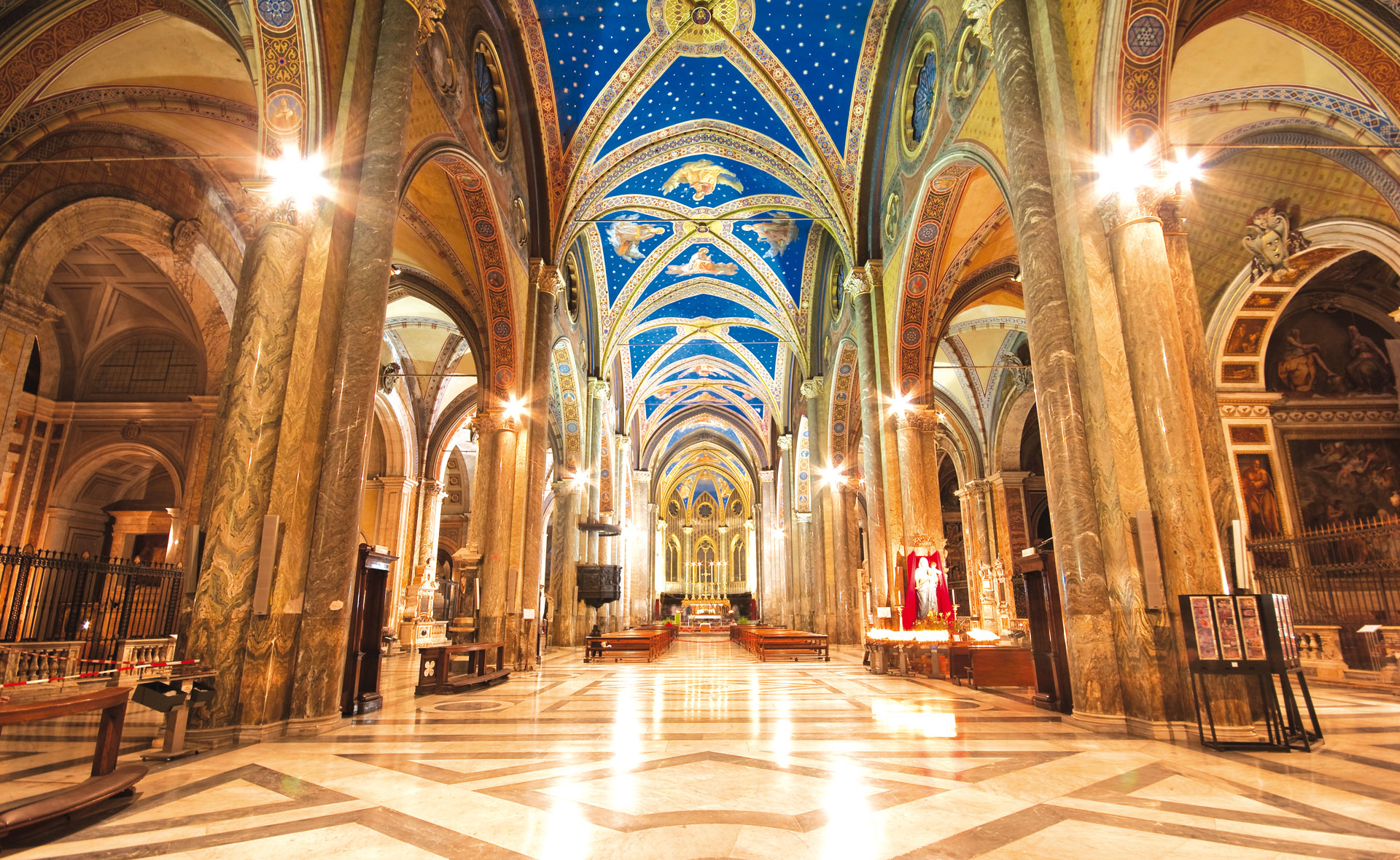With its valuable monuments from the Roman, Medieval and Renaissance periods, the area of the ancient Campo Marzio is the pulsing heart of Rome.

Campo Marzio was seen by the Romans as the “centre” and it takes its name from the god of war, Mars, because originally it was home to a sanctuary dedicated to the deity and hosted military exercises. Subsequently, great noble families chose it as their place of residence, thus determining its current architectural structure. When you walk through the alleys of the neighbourhood, you come across priceless treasures.
We start from via dei Burrò, which leads to a characteristic eighteenth-century square, designed by Filippo Raguzzini. This lovely square is a real outdoor theatre, which fits well with the monumental seventeenth-century facade of the Jesuit Church of Sant’Ignazio di Loyola. As soon as you enter the church entrance portal, you have the feeling of having entered a “celestial” dimension. The interior decoration is the work of the Jesuit painter Andrea Pozzo, learned, theoretician of perspective, who created the Glory of Saint Ignatius in the vault of the nave, one of the largest frescoes in the world, 750 square metres painted in just three years! The tight architectural perspective breaks through the vault of the building and all the figures seem to be enraptured by a dizzying succession of planes, leading up to the glory of the saint himself. Andrea Pozzo was also responsible for the decoration of the apse, the presbytery and the fake perspective dome, a flat circular canvas, 17 metres in diameter, the extraordinary optical effect of which is able to deceive the visitor.
Another gem in the district is the Church of Santa Maria Maddalena, located in the square of the same name, which is one of the rare examples of rococo style in Rome. Despite its small size, the church does not give up the typically baroque desire to arouse wonder and amazement in the faithful. The sacristy, frescoed by Girolamo Pesci, in eighteenth-century style, preserves the original stucco decoration and the rich furniture, unique among the sacred furnishings.
Not far from the Church of Santa Maria Maddalena is the Basilica of Santa Maria sopra Minerva which preserves the Romanesque facade, despite the seventeenth-century reconstruction. The austere exterior of the building hides countless wonders, such as the Risen Christ by Michelangelo Buonarroti, the altarpiece depicting the Last Supper by Federico Barocci, the frescoes done by Antoniazzo Romano and the Carafa Chapel, which houses the splendid fresco cycle by Filippino Lippi, considered one of the most significant works of late fifteenth-century painting in Rome.
